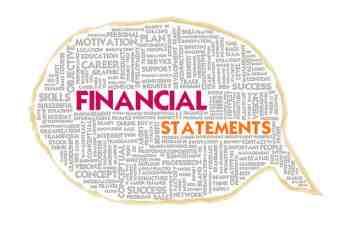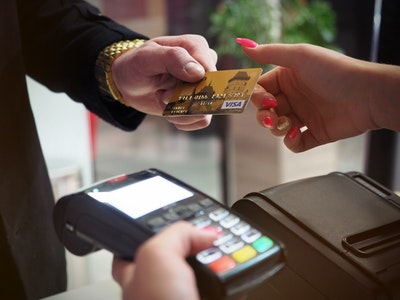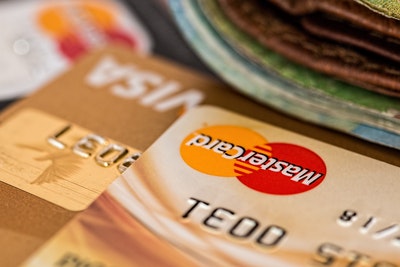How to Check A Credit Card Statement in 6 Easy Steps
 You might think that with today’s technology, credit card statement errors would be a thing of the past, but in many ways technology makes it easier for errors to slip by unnoticed. Most of these errors are unintentional, such as being overcharged at a merchant or a mathematical mistake on your last payment, but an unintentional error can still cost you money. That’s why it’s important for you to know how to check a credit card statement.
You might think that with today’s technology, credit card statement errors would be a thing of the past, but in many ways technology makes it easier for errors to slip by unnoticed. Most of these errors are unintentional, such as being overcharged at a merchant or a mathematical mistake on your last payment, but an unintentional error can still cost you money. That’s why it’s important for you to know how to check a credit card statement.
Complaints about billing errors and other poor business practices are so rampant, the Consumer Financial Protection Bureau, or CFPB, recently launched an online Consumer Complaint Database, to which anyone can submit problems with credit card statements. The CFPB has received 17,000 credit card complaints, of which billing disputes are the most common; in 2,000 such cases where money was refunded, credit card companies paid out an average relief of $130.
I know that there are a few things I would like to do with an extra $130, and handing it over to a credit card company in error is not on that list. That’s why I make it a practice to check my credit card statements regularly; more than once my credit card statement has been inaccurate, and the dispute was resolved in my favor. Most of these involved small amounts of overcharges, like an additional $5 on a bill at a restaurant, but not always.
The Steps to Check Your Credit Card Statement
The worst billing errors usually involve the credit card company’s failure to accurately update or calculate interest rates, payments made, and other charges. I once paid off a credit card in full, and then received a statement the following month for the same balance, even though the full payment was correctly reflected on the statement. It just wasn’t deducted! That’s bad math any way you look at it, and a strong case for checking your credit card statements every month.
Your credit card company may add additional information not covered below, such as privacy disclosures, cash advance balances, and even spending snapshots on your statement, but these six sections are required and fairly standard. Familiarize yourself with these sections and the line items that you need to check, and you will know how to read a credit card statement.
- Account Details. Most credit card issuers that I am familiar with are now bundling several important pieces of information under Account Details: The card holder’s information, the credit limit, the credit available, and the minimum payment due are now in this one section. Check this section to make sure the information provided matches your records for the card.
- Previous Balance. Your previous balance is the balance that you owed last month. Make sure that the payment you made is accurately reflected on your current balance, and that it reduced your balance accordingly – this is a common area for mistakes.
- Current Charges. Current charges are all of the transactions made since your last statement. Scan this list to ensure that you remember making a purchase at every merchant listed. Then, go back and check your receipts and compare the amounts you signed for with the amount you are being charged.
- Payments and Credits. Depending on your credit card company, your previous balance and payments made since your last statement may be duplicated in this Payments and Credits area. Again, ensure that any payments you have made are accurately reflected and that they reduced your total balance by the correct amount. This section will also list any credits due to returns or adjustments on previous purchases, so make sure that any refunds you are owed are listed.
- Annual Percentage Rate. For most people, the APR is the section where reading a credit card statement becomes an exercise in frustration. By law, credit card issuers are now required to explain to you your APR, how it is calculated, and the amount of time it will take to repay your current balance by paying only the minimum amount due every month, plus the total interest charges that will accrue in that time. Look over this section for accuracy, and don’t be afraid to ask your credit card company to walk you through it.
- Payment Information. In this section, the credit card company will outline the minimum payment due, the due date for that payment, the late fee if you miss a timely payment, and the fee that applies if you go over your credit limit. Always pay your credit cards at least ten days ahead of when they are due; this gives you time to ensure payment was received before the due date.
Reasons to Check Your Credit Card Statement
According to Bankrate.com, on 70% of credit reports there are errors serious enough to prevent an individual from being approved for further credit. All too frequently, these errors start with failure to check a credit card statement.
If you haven’t used a particular credit card for a month or longer, it’s tempting not to check the statement when it comes in the mail; after all, you don’t owe anything because you haven’t used it, right? Unfortunately, identity thieves might have been using it for you – and you won’t know unless you are checking those statements regularly.
Typically, you have sixty days from the date of an erroneous or unapproved charge to file a dispute with your credit card issuer, though you should try to resolve the charge with the merchant first. The dispute must always be in writing, and include the reason for the dispute and any supporting information you have.
While the credit card company investigates your dispute, you are not responsible for making payments on the disputed amount, but you absolutely must continue to make payments towards any other balance you have. By understanding your credit card statement and how to check a credit card statement, you will be able to pick out what to dispute and what to pay.




